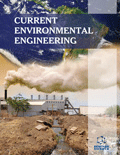Abstract
Background: Chemical fertilizers used for field crops have three main macronutrients components: nitrogen, phosphorus and potassium. They are the limiting factor to plant growth. Effluents from treated wastewater have appropriate concentration levels of those macronutrients to support crop production.
Aim: The main purposes of this pilot case field study were: (i) to recover the valuable nutrients from sewage using a recirculating vertical flow constructed wetland planted on top with soybean (Glycine max, L.); (ii) to determine the potential of growing renewable feedstock commodities irrigated with treated effluent as a phytoremediation mechanism to clean wastewater onsite.
Method: Grab samples of effluents from both septic tank and the constructed wetland were analyzed for water quality variables.
Result: Mean treatment efficiencies (removal) were high for biochemical oxygen demand (98%), ammoniumnitrogen (97%), total suspended solids (96%), total Kjeldahl nitrogen (95%), fecal coliforms (93%), total nitrogen (85%), and total phosphorus (77%), while it was relatively low for potassium (43%). Supplementary irrigation or commercial fertilizers were not added during the growing season. The mean yield ± standard deviation (seed mean weight ± standard deviation) for fresh dried weight of soybeans crop was equivalent to 2,625 ± 1,653 kg/ha (0.21 ± 0.05 g/bean).
Conclusion: These results show that soybean growing on top of a recirculating vertical flow constructed wetland could be a sustainable alternative technology and a green mechanism to remove pollutants (nutrients) from sewage. Also, nutrients recovery through direct reuse of treated sewage effluents as source of fertilizers and water to grow first-generation biofuels commodities such as soybean is feasible.
Keywords: Commodities, constructed wetland, Glycine max, nutrients, sewage, soybeans, water reclamation.
Graphical Abstract
 10
10 1
1

